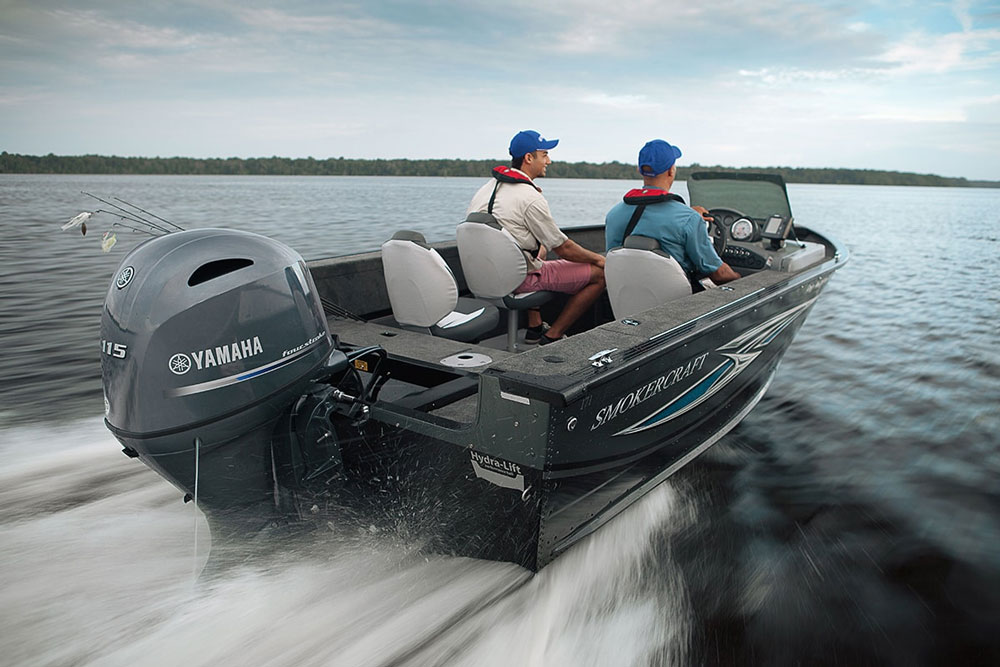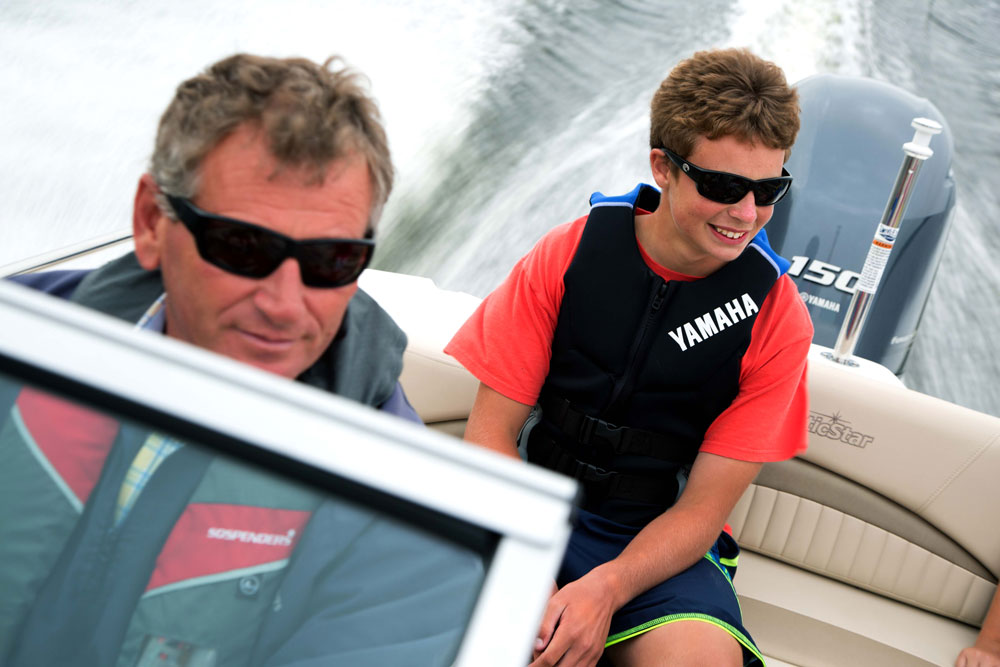If you're looking at hot new fishboat options in the 18 to 21 foot range, there's a good chance you'll be choosing between the Yamaha F115 and the Yamaha F150 as outboard motor options. There's a big jump between these two size ranges, which is because stepping up from the F115 to the F150 means going from a 106.2 cubic inch displacement engine (the same powerhead as is used for the Yamaha F90) to a 163.0 cubic inch displacement engine. That's a big deal, especially in a size range where these very different powerplants could be used on the very same transom. So let's take a deeper look at each.

The Yamaha F115 Four-Stroke Outboard Engine
The Yamaha F115 is a 1832cc in-line-four with EFI, a 35 amp alternator, optional Command Link with variable trolling speed control (which allows for 50 rpm adjustments to dial in trolling speeds), and is available in 20- and 25-inch shaft lengths. It weighs 377 pounds, and received a do-over in 2014 when Yamaha went to a new throttle body (60mm), a new exhaust design, and large diameter intake and exhaust valves. The original F115 came out in 1999 and there are still plenty of these motors shredding the water today; both the original and new versions score high marks for reliability and longevity.

Yamaha F150 Four-Stroke Outboard Engine
The Yamaha F150 is also an in-line-four, with 2670cc - 2785cc, 35/50 amp alternators, EFI, and the same Command Link capabilities. It tips the scales at 487 pounds maximum (though we note that Yamaha published weights excluding oil, gear lube, and propeller). The F150 is one of Yamaha's all-time most popular outboards, and was refreshed just three years ago with a new cowl design, and a smoother clutch dog. Despite a (easily remedied) counter-balance issue early on with pre-2005 models, through time the F150 has developed an awesome reputation for reliability and longevity. In fact, many people consider post-05 F150's to be one of the most reliable four-stroke outboards ever produced.
So, just exactly what does all this mean, in an apples-to-apples performance comparison? An Alumacraft Dominator 185 Sport (which weighs 1,530 pounds) rigged with the F115 cruises at 27 MPH while spinning 4500 rpm; at this speed it gets 4.7 mpg. At wide-open throttle, the F115 propels the Dominator to 39 mph and gets 3.8 mpg.
The exact same boat rigged with the F150 turns just 3500 rpm to get up to 27 mph, while it cruises at 37 mph at 4500 rpm, and gets 4.4 mpg at this speed. At WOT, the boat hits 48.1 mph and gets 3.1 mpg.
What do these numbers tell us? For starters, the F150 obviously provides one heck of a lot more speed. But interestingly, it doesn't chug any more fuel to do so at reatively low but realistic cruising speeds. In fact, at 27 mph it actually burns less fuel. So if you believe a F115 will fit your needs better because it's more economical to run, it's time to revisit that consideration. True, few of us would be able to resist goosing the throttle well beyond 3500 rpm on a regular basis, and the 150's advantage would evaporate along with running it harder. But it's also true that on boats of the size which these engines are appropriate for, quite regularly sea conditions may force you to slow down, anyway.

Where the F115 does save you money, however, is in initial cost. The F150 will run you around $12,000 or $13,000, and the F115 is usually $2,000 to $2,500 less. While 20 percent or so in cost is certainly significant, for most people buying a new boat, it won't be a make-or-break difference. The weight of these engines, however, is a more important consideration. Remember that the F150 weighs in at a solid 110 pounds heavier. On a small boat, this can be a big deal.
Which engine will be the right choice for you, and the boat you're looking at? That's a question we can't answer, since every boat and every owner is a bit different. But we can say one thing with confidence: we don't think you can go wrong choosing either of these powerplants.